It was getting late, we were in the area and dusk was fast approaching. We took a chance and decided to drive through the oncoming mist from Oxford Island Nature Reserve (where we were very ‘delayed’ at a nature event) towards Portmore Lough. I have never been to Portmore Lough (part of Lough Neagh and Lough Beg European Special Protected Area – for birds) before and I pleaded my parents to make the detour, I knew I was asking a lot as we had a long drive home already but I’m lucky that I have some very obliging people in my family! We arrived at the reserve at almost 5pm and the light was low, but wow, the birdsong was everywhere, notably a large flock of Goldfinches.
I could feel the magic of this place, the mist, the cold beauty, the trumpeting of the Whooper Swans and the gliding grace of a lone Marsh Harrier, a first for me. It’s ghostly presence flitting in and out of the mist like a soaring shadow. We all ran down the boardwalk, the cold biting at our toes as we rushed to the bird hide. Before we arrived, figures emerged from the swirling fog. We were delighted to meet a small herd of Konik Ponies! These fantastic beasts hold a special place for me as they were old residents of Castle Archdale Country Park where my dad works and it was just lovely to see them. These majestic creatures originate from the Bilgoraj region in Poland. Some evidence has revealed that these hardy horses are the nearest relative to the now extinct Tarpan or Eastern European wild horse. People say that these equines are semi-feral but even so they are still endearingly friendly.
These sturdy animals are steeped in history, during World war I the horses (called Panje horses) were key to the transport of German troops and supplies. When the war had subsided, a farmer named Tadeusz Vetulani wanted to turn the Panje Horses back into their semi-feral states as they once lived in Bilgoraj; by introducing them back into woodland areas. He then renamed them as Konik ponies which literally means small horse in Polish. Now, these historic animals roam over wetlands forest and plains.
These horses are now being summoned for a new mission; this time their task is not war but conservation. They are now deployed in thousands of wetland reserves worldwide, to clear up scrub and bracken. Their role is vital to declining breeding waders. They provide the desired habitats for Snipe, Lapwing, Curlew and Golden Plovers. What a job and what conservation heroes!! They are very adapted to these harsh habitats and don’t mind getting their feet wet. They can go where other livestock wouldn’t be able to cope. Their strong jaws and razor sharp teeth are perfect for shearing scrub and making sure that gorse and bracken can’t get out of control.
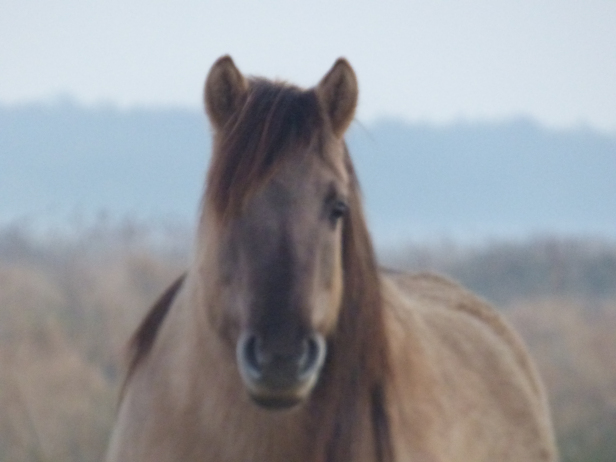
Despite all their hard work they didn’t mind coming over and let us have a stroke and take pictures with them. This visit to Portmore lough was truly magical, with the heavy fog wrapping us up like a blanket and the rush beds were gently swaying in the breeze. The overall effect was truly magical and mysterious. I could’ve stayed there well into the evening, listening to the whistles of the wind, the haunting trumpeting of Whoopers and stroking the soft backs of the Konik ponies. RSPB Northern Ireland have created an inspiring family reserve and we all can’t wait to return again, very soon.
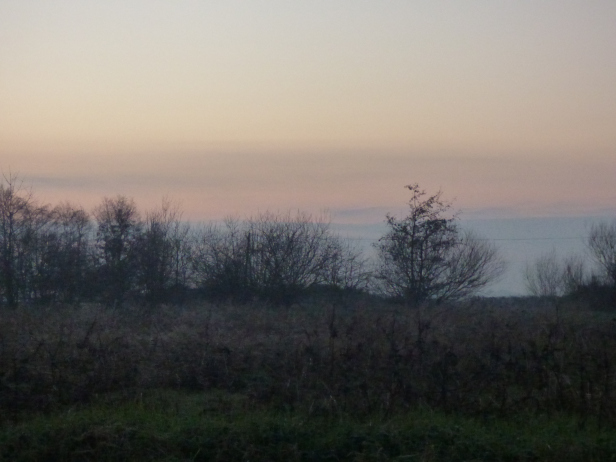
Thank you for reading my 50th blog post! ☺️
Dara

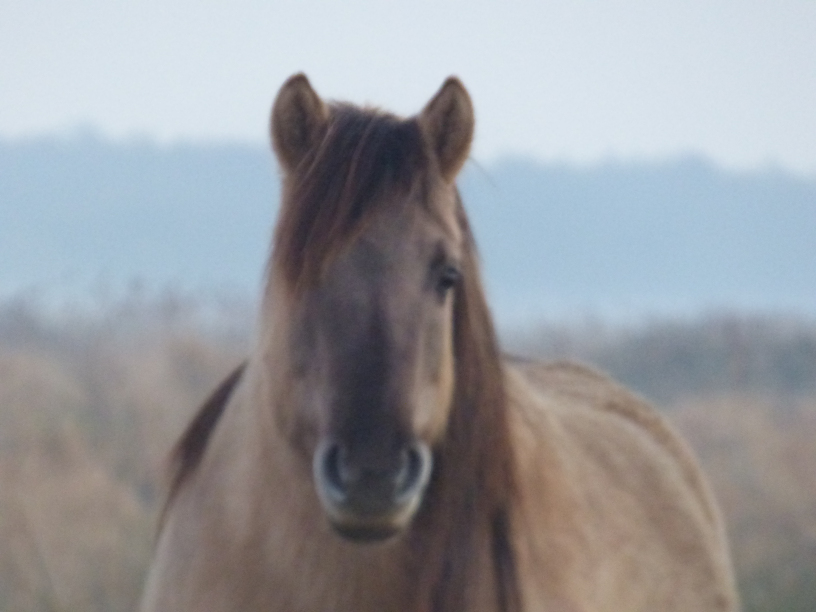
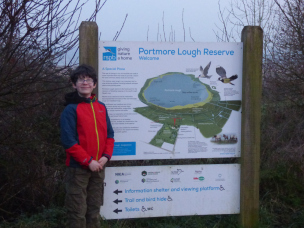
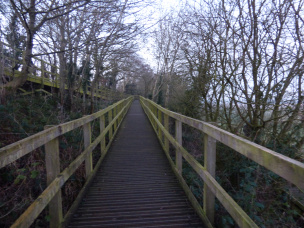
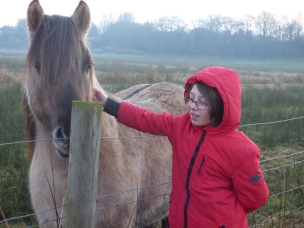
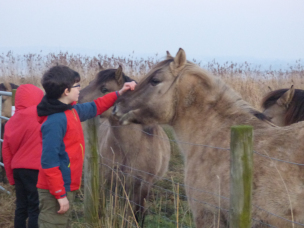
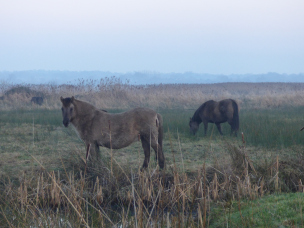
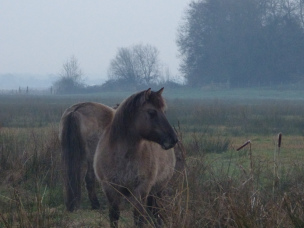
Beautiful piece, I really felt like I was there with you! Well done on 50 blog posts – all have been so well written and researched!
LikeLike
Thank you very much, that’s very kind of you. Dara ☺️
LikeLike
Dara, you have brought us all to this beautiful place with your words. You are a magician, but I really want to go here! I’d never heard of it at all, so thank you!
LikeLiked by 1 person
Thank you so much. Glad you enjoyed the post and thanks for your comment. Dara ☺️
LikeLike
Dara, what an intriguing story about the Konik ponies. I’ve never heard of them. You captured the magical quality of your adventure so well the place and its inhabitants seem to come alive.
LikeLike
Hi Sally! Thank you so much, that’s really kind of you. I’m so glad you enjoyed the post.
Dara ☺️
LikeLiked by 1 person
You’re most welcome!
LikeLiked by 1 person
Congrats on your 50th post, Dara, truly a Golden blog!
LikeLike
Hi Dara,
Wow, I’ve never heard of these horses and I was a crazy-horse-addict a while ago. Brilliant to hear about them, they’re fascinating.
Thanks for following my blog, I really appreciate it.
~Emily
LikeLike
Hey, thanks and you’re welcome. Feel free to follow me back 😉👍🏻
LikeLiked by 1 person